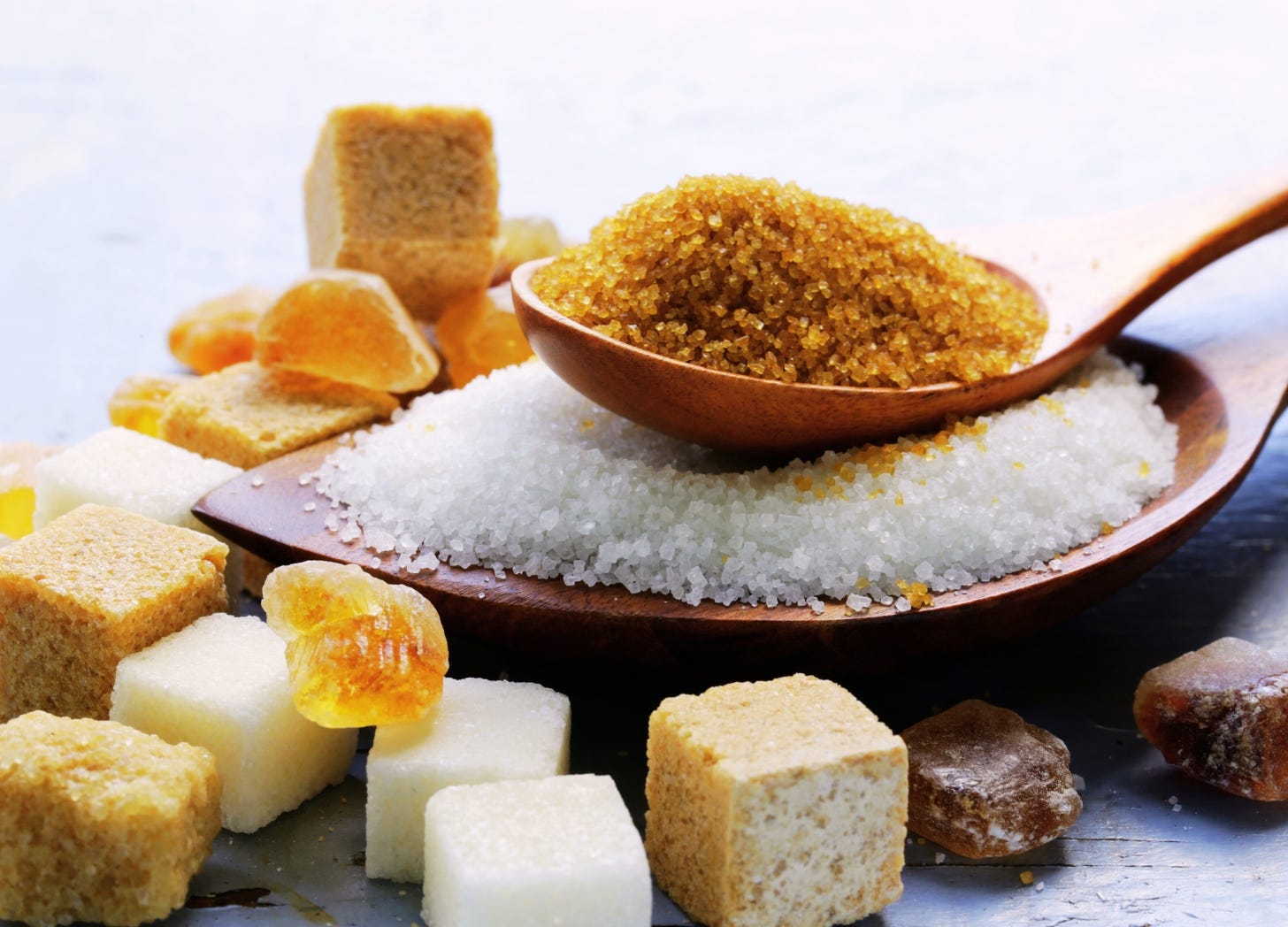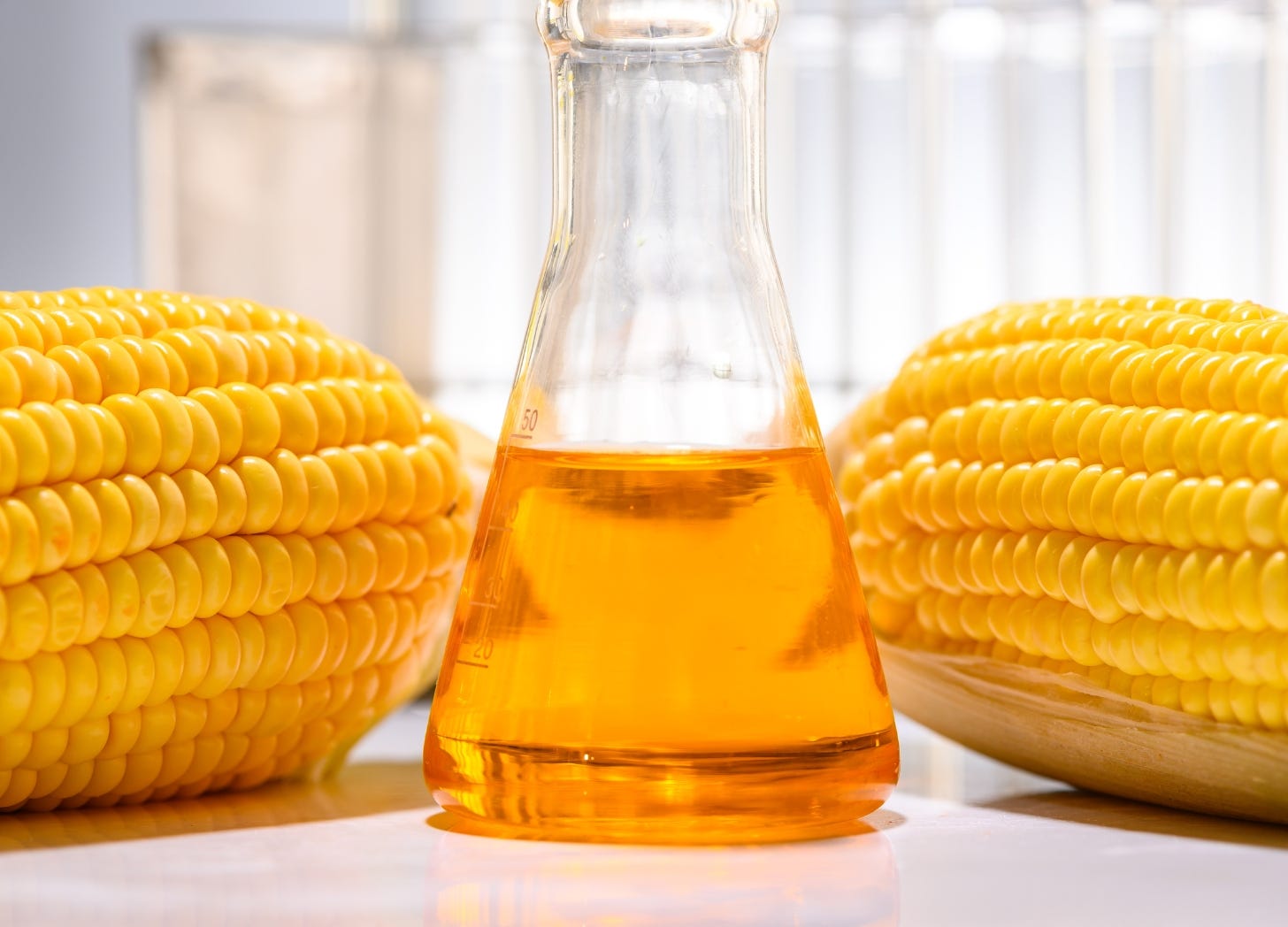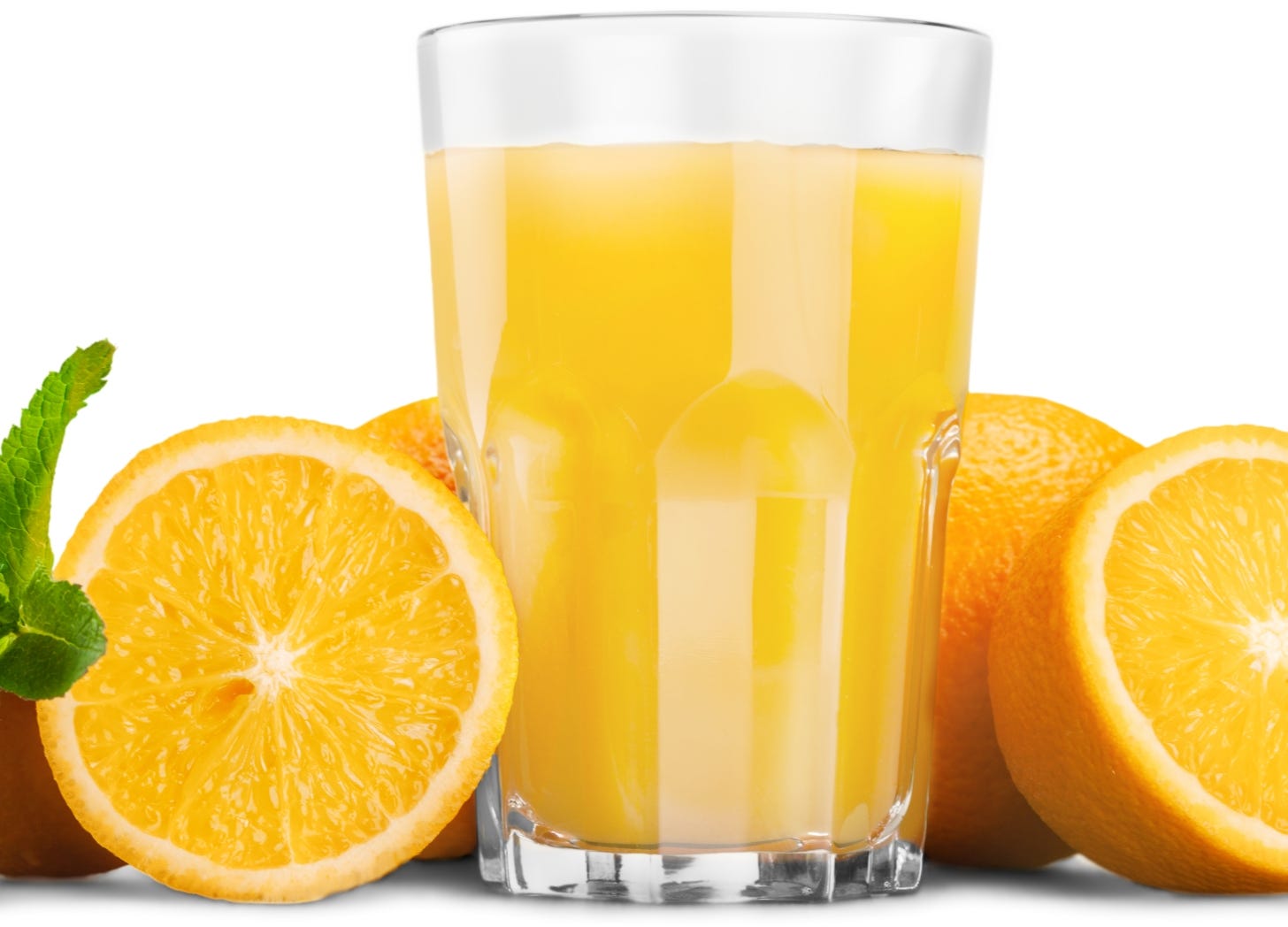A Lesson in Labels Part 2: The Hunt for Sugar
Because the marketing labels don't tell the whole story
Girls, if you reviewed Part 1, you now know what to look for when reading package labels.
You know that marketing labels such as ORGANIC are helpful, but insufficient.
You know that we must review ingredient labels to discern whether a product is made with harmful ingredients.
And you know the most common names for Seed Oils: Corn, Canola, Safflower, Sunflower, Soybean, Vegetable.
Today, we hunt for sugar.
Think you know what sugar looks like? Maybe not when it is listed on a label!
Why Limit Added Sugar
Sugar is a simple carb. This delicious and addicting substance is bad for your body in more ways than Jelly Belly’s has flavors.
Yes, it leads to weight gain. Our bodies cannot manage the quantities of sugar we consume on our standard American diet. So we beef up our fat cells for the famine that never comes.
In addition: sugar is addicting, triggering you to crave more and more. Added sugar results in blood sugar spikes and crashes, which give us mood swings and ages us.
Unrelenting quantities of sugar overwhelm your system. Your cells stop responding to the insulin constantly pumped out by your exhausted pancreas. Your liver is force-fed fructose and fattens up like a foie gras goose. You develop chronic inflammation, which is linked to all chronic diseases: Type 2 Diabetes, Heart Disease, Autoimmune Disease, Alzheimer’s Disease, and Cancer. And, by the way, sugar is the favorite food of cancer cells. (Cancer cannot use ketones, your energy source on the Keto diet).
Plus, it gives you bad skin.
The USDA recommends no more than 6 teaspoons per day for women. The average American eats 17.
I know you are not eating it by the teaspoonful. So just how is it getting to your belly?
Added Sugar has Many Faces
Added sugar is just as it sounds, an ingredient added to a mix to increase sweetness. There is rarely a good reason to add sugar in any form to your food.
Added sugar comes under cover of many names.
Let’s start with…Sugar.
Sounds simple - avoid the ingredient SUGAR.
I’m just here to tell you that there are a host of tempting qualifiers out there, hoping to lure you in. No matter how it is described, avoid:
Brown Sugar
Beet Sugar
Cane Sugar
Confectioner’s Sugar
Organic Sugar
Palm Sugar
Raw Sugar
This is not an exhaustive list, but you get the idea.
Natural ingredients that are, in essence, sugar?
Isn’t honey good for you? Agave better than table sugar? After all, these are natural.
Reminder: natural does not always mean good to eat. Many mushrooms are natural…and poisonous.
If you believe, as many do, that honey has health benefits, go ahead and consume in moderation as part of your thoughtful low-carb eating plan.
But honey listed as an ingredient on a cracker box? Pass.
Similarly, if your cousin made his own maple syrup, enjoy it as an occasional treat in your oatmeal.
But maple syrup or any of these on an ingredient list? Pass.
Honey
Maple Syrup
Agave
Molasses - a byproduct of making sugar
Corn. A League of its own.
The sweet corn we love today is nothing like the corn given settlers by Native Americans. It is so much sweeter - and we love it! We love it because of the high sugar content.
And sadly, there is little in the plus column to balance this out.
So treat yourself to corn on the cob now and then, but avoid corn derivates in your food.
The Granddaddy of them all is High Fructose Corn Syrup. In order to understand why this one is so bad, you need to know that every cell in our body can use glucose for energy, but only our livers can accept fructose. Spiking our system with sugar is bad overall, but spiking our system with fructose in particular can lead to liver damage. We get plenty of fructose as it is: table sugar is half glucose and half fructose. A diet high in fructose is a sure road to weight gain, type 2 diabetes, fatty liver disease, and more.
Avoid:
High Fructose Corn Syrup - arguably the most damaging sweet stuff
The Corn Family - pretty much any corn additive
Scientific-sounding ingredients are also forms of sugar.
Would you rather memorize 60+ names for sugar, or memorize a handful of rules? Me, too. So far, we know to look for the word sugar as well as the names of naturally sweet syrups.
Here are just a few more rules that should cover most of the rest.
The Syrup Family - It’s a safe bet that any syrup is sugar. Avoid.
The ‘-ose’ Family - Fructose, Glucose, Dextrose, Sucrose, Maltose
The ‘Malt’ Family - Maltose, Maltodextrin, Ethyl Maltol, Malt Syrup ( a 2-fer!)
What about Sugar NOT Added?
Can we relax about sugar found naturally in food like fruits and vegetables?
There is naturally occurring sugar inside your apple, banana, corn.
Is it good or bad to eat sweet fruits and vegetables?
There are different schools of thought. The Carnivore camp eschews the plant family altogether. Keto adherents would waive you off bananas but green light blueberries. And I have no idea about Vegetarians because I am not going there any time soon!
My advice: choose fruits and vegetables that have nutritional benefits and enjoy in moderation.
I eat blueberries and butternut squash all the time. They have vitamins, fiber, antioxidants, and relatively few carbs for the half-serving size I portion out. On the other hand, I never buy bananas, cantaloupes, or mangos.
No Juice for You!
When we drink juice, we are drinking the sugar of the fruit (often with added sugar) and leaving behind the fiber.
You may think fiber keeps us “regular,” and that’s not wrong. More important to me is that fiber slows the absorption of sugar into our blood stream. Read more on this from the Glucose Goddess.
A glass of orange juice requires the juice from 3-5 oranges. When you drink that juice, you are getting all the sugar and none of the fiber. And I’ll bet you could drink that glass in twenty minutes or less. Could you eat four oranges in twenty minutes? Probably not. That tells us something.
Skip the juice. Eat the fruit.
Decide.
Decide to limit sugar. You can.
Because you deserve a long and healthy life.
Love you!






